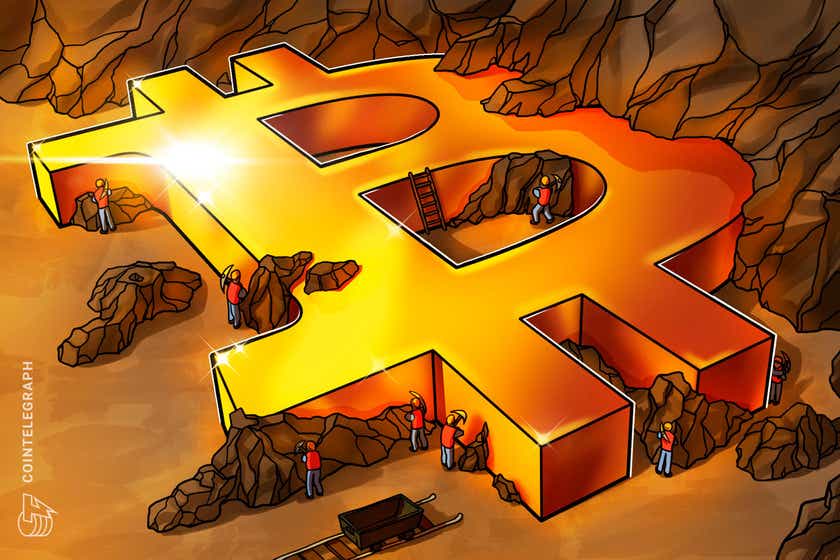A million down, a billion to go: How does DeFi reach mass adoption?
A report on Friday from Ethereum metrics website Dune Analytics showed that the decentralized finance (DeFi) ecosystem now counts over 1 million unique Ethereum addresses as participants — an over tenfold increase from the 91,000 addresses on Dec. 6, 2019.
But while the growth has been undeniable, some experts caution not to interpret the milestone as a sign of widespread adoption. In fact, in order for DeFi to truly break mainstream, many of the emerging vertical’s proponents may have to rethink their communication and outreach strategies.
The Dune Analytics report, compiled by aggregating the total number of addresses which have ever utilized popular DeFi protocols such as Uniswap, Compound, and Aave, noted that their calculations interpret “users” as “unique addresses,” meaning that the millionth address mark might not be as bullish as it seems at first blush.
ONE MILLION DEFI USERS https://t.co/H11HBUIrOe pic.twitter.com/daqRpBGfbF
— Richard Chen (@richardchen39) December 4, 2020
Many DeFi users commonly deploy multiple addresses in order to protect their privacy while transacting on Ethereum’s public network, and conflating “addresses” with “users” may lead analysts to some dubious figures.
Brian Flynn, the co-founder of a startup that helps to incentivize participation in DeFi, Rabbithole, suggests that the actual number of participants is far lower.
“The reality is that the number of unique users is only 10-15% of that. That’s the real metric that matters,” Flynn told Cointelegraph.
‘Speculators to participants’
So how will DeFi truly reach a million users and beyond? Flynn explained that the first step in attracting a larger number of unique users will be a “killer application focused around speculation” similar to CeFi trading platform Robinhood, which enjoyed a remarkable boom in participation during the Covid lockdowns.
Over the long term, however, finding ways to incentivize users to participate in governance and infrastructure-layer elements of DeFi is what will lead to sustainable success.
“Many users understand how to trade tokens on Uniswap or an aggregator, but don’t understand how these protocols work under the hood,” he said. “For example, of all the addresses who have traded on Uniswap, only a small fraction have ever supplied liquidity. For all of those who supplied assets on Compound to earn interest, only a small fraction borrowed to take out a loan.”
“We need users going further down the rabbit hole and moving from speculators to participants in an open economy. That’s how we drive real adoption.”
To this end, Flynn revealed that Rabbithole has “several” campaigns planned with leading DeFi platforms to incentivize richer protocol participation from users in exchange for governance tokens.
“This change won’t happen overnight, but the most important thing we can do is educate with real hands-on participation in these networks,” he added.
‘A different profile of user’
Encouraging users to become more active actors in the DeFi landscape is one promising step towards adoption, but another may be attracting different kinds of users altogether.
Patrick Rawson, a co-founder at DAO engineering and blockchain experimentation outfit Curve Labs, says that the current user experience in DeFi is tailored to a very specific demographic.
“The people who are using these mechanisms, they skew male, they skew younger, they skew wanting to earn profit […], they skew towards being technically savvy,” said Rawson. “This profile of user is going to demand whatever makes them the most profit.”
If DeFi truly wishes to “bank the unbanked” and reach “the last mile” of users, they might have to contemplate new outreach strategies, argues Rawson — one which better empowers users to seek their desired outcomes.
“Let’s look at a different profile of user for a second. Older, comes from sub-Saharan Africa, female, has a family, not technically savvy. Is this user going to want profits at the expense of everything else? No — she’s probably more interested in the environment around her, she’s interested in her family being healthy and well. […] She wants a DeFi that benefits her local community, rather than a DeFi that optimizes profit at all costs.”
Rawson says that in order to accomplish this shift, DeFi will have to tailor itself to “localized institutional structures that reflect local values.” One example he offered is the Sarafu credit, a “community currency” experiment in Kenya that formerly partnered with Bancor.
Flynn agrees that focusing on profits above all else might be a restrictive way to preach the gospel of DeFi. The manner in which current participants in the ecosystem discuss DeFi with friends and family will also play an important role in building towards the future:
“We need to stop focusing on price, and more about how cryptonetworks and decentralization is a new way of building organizations.”









